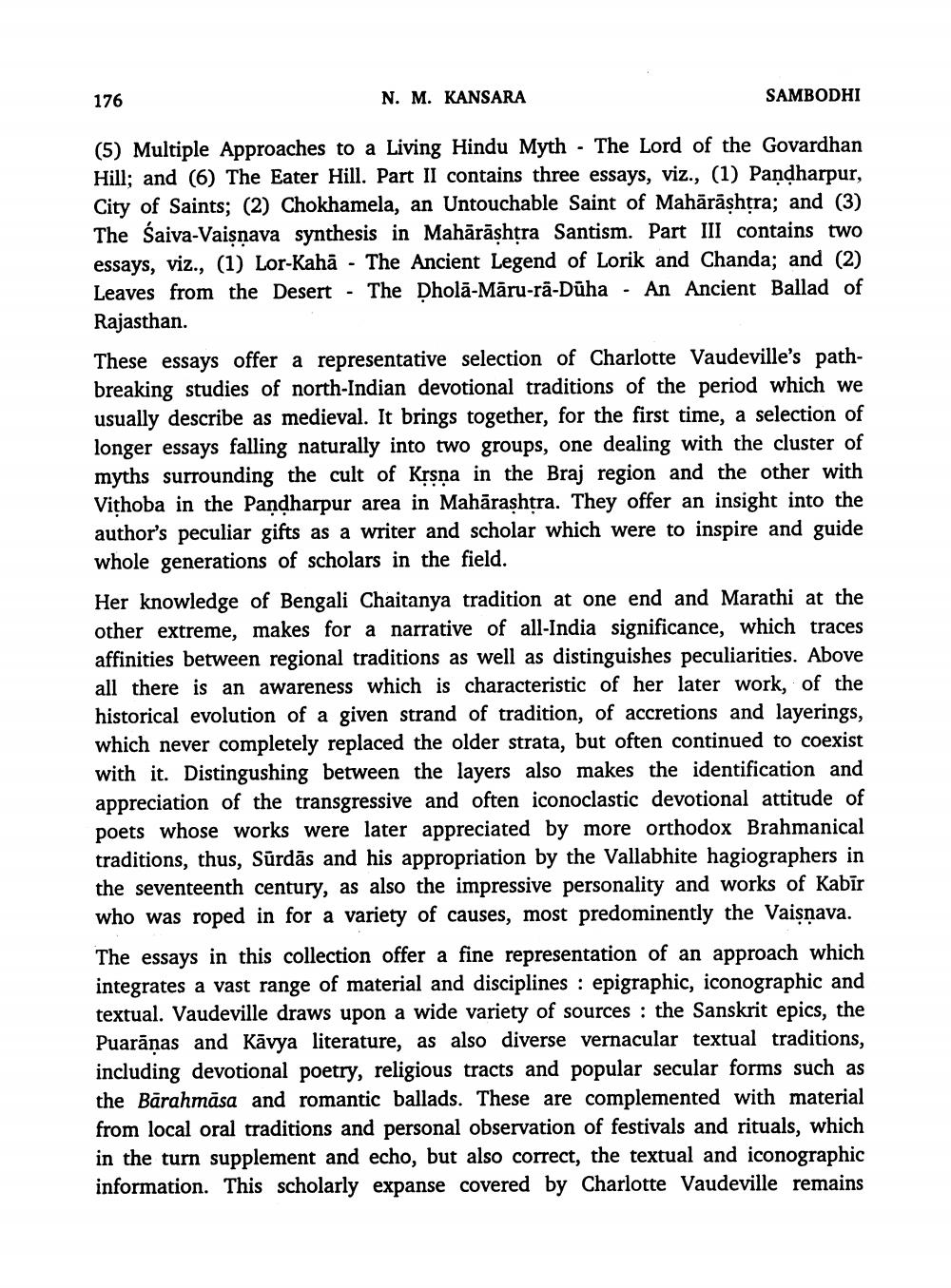________________
176
N. M. KANSARA
SAMBODHI
(5) Multiple Approaches to a Living Hindu Myth - The Lord of the Govardhan
lill; and (6) The Eater Hill. Part II contains three essays, viz., (1) Pandharpur, City of Saints; (2) Chokhamela, an Untouchable Saint of Mahārashtra; and (3) The Saiva-Vaisnava synthesis in Mahārāshtra Santism. Part III contains two essays, viz., (1) Lor-Kahā - The Ancient Legend of Lorik and Chanda; and (2) Leaves from the Desert - The Dholā-Māru-rä-Düha - An Ancient Ballad of Rajasthan.
These essays offer a representative selection of Charlotte Vaudeville's pathbreaking studies of north-Indian devotional traditions of the period which we usually describe as medieval. It brings together, for the first time, a selection of longer essays falling naturally into two groups, one dealing with the cluster of myths surrounding the cult of Krsna in the Braj region and the other with Vithoba in the Pandharpur area in Mahārashtra. They offer an insight into the author's peculiar gifts as a writer and scholar which were to inspire and guide whole generations of scholars in the field.
Her knowledge of Bengali Chaitanya tradition at one end and Marathi at the other extreme, makes for a narrative of all-India significance, which traces affinities between regional traditions as well as distinguishes peculiarities. Above all there is an awareness which is characteristic of her later work, of the historical evolution of a given strand of tradition, of accretions and layerings, which never completely replaced the older strata, but often continued to coexist with it. Distingushing between the layers also makes the identification and appreciation of the transgressive and often iconoclastic devotional attitude of poets whose works were later appreciated by more orthodox Brahmanical traditions, thus, Sūrdās and his appropriation by the Vallabhite hagiographers in the seventeenth century, as also the impressive personality and works of Kabir who was roped in for a variety of causes, most predominently the Vaisnava.
The essays in this collection offer a fine representation of an approach which integrates a vast range of material and disciplines : epigraphic, iconographic and textual. Vaudeville draws upon a wide variety of sources : the Sanskrit epics, the Puarāṇas and Kāvya literature, as also diverse vernacular textual traditions, including devotional poetry, religious tracts and popular secular forms such as the Bārahmāsa and romantic ballads. These are complemented with material from local oral traditions and personal observation of festivals and rituals, which in the turn supplement and echo, but also correct, the textual and iconographic information. This scholarly expanse covered by Charlotte Vaudeville remains




